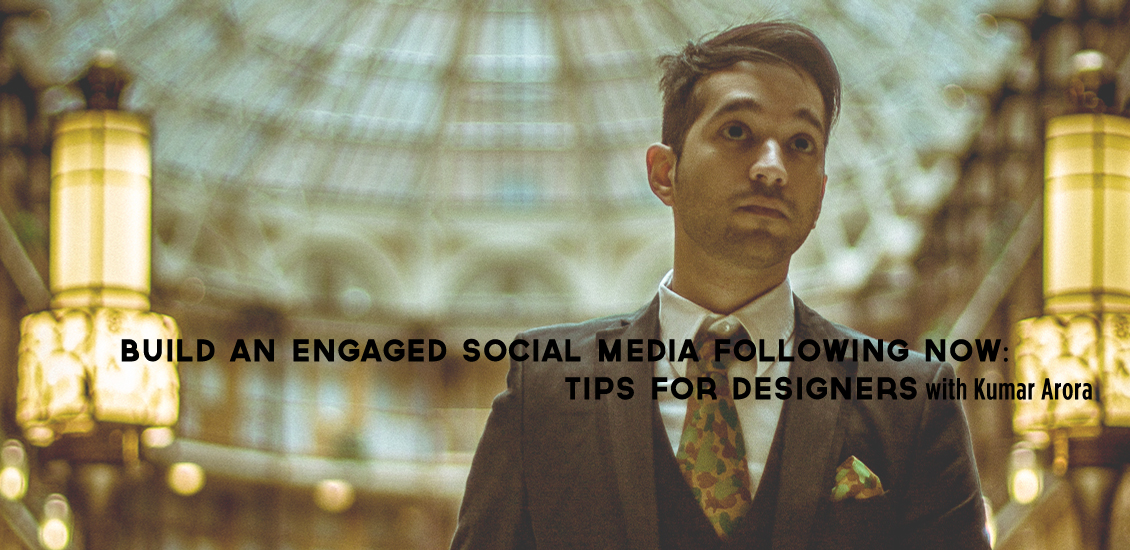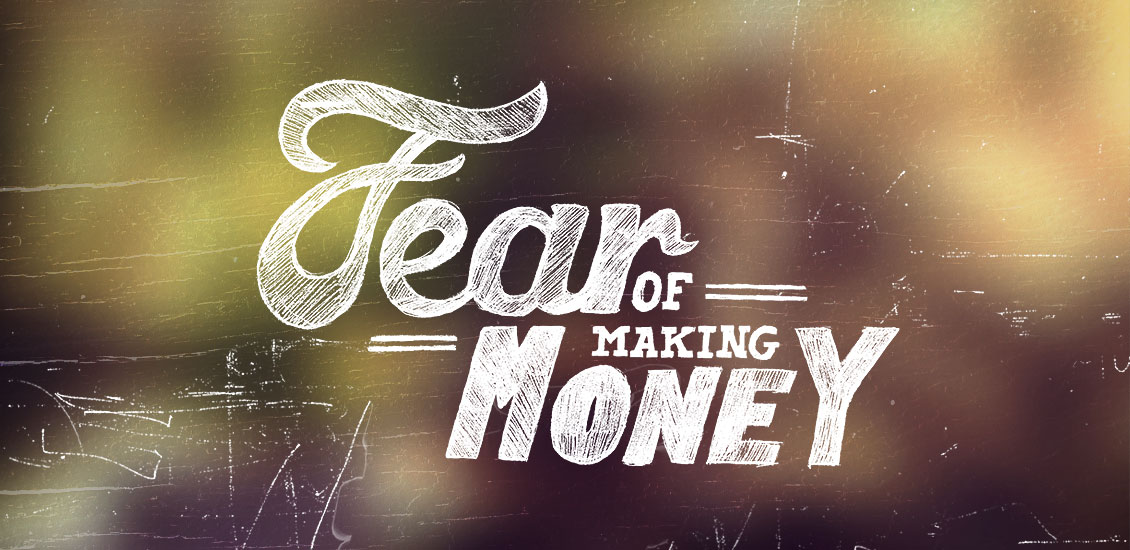Articles by Year: 2013
Modern Gigposter Design: 100 Stunning Examples – Volume II
Two years ago we put out a post showcasing some of the best posters of the previous few years before that.
Today we are doing the same thing. This article contains 100 stunning posters made in the last two years.
This second collection highlights the trends and changing styles in the gigposter world. If you go back and compare the previous selection to the ones I have gathered today, there are some clear differences. Now I know that there are still posters that get produced in the same styles as they would have two or more years ago, but overall, as a scene, and as a group of designers and illustrators, you can see the evolution of the gigposter. It might not be a dramatic and sudden evolution that is crystal clear to everyone, but for the most part it is slowly and subtly changing. There are certain dynamics that have changed or appeared which you will be able to see if you go back over the years and see this evolution in play.
- Categorized: Graphic Design, Inspiration
- Tagged: go media's arsenal, Graphic Design
40+ Excellent Hand-Lettering Inspirations
What’s better than pencil on paper?
We love to drool over the work of talented hand-letterers we stumble upon on sites like Pinterest and Behance.
Here is some work that struck our fancy as of late. We hope it inspires your own creativity.
- Categorized: Graphic Design, Inspiration
- Tagged: go media's arsenal
Handmade Love: Update
I received many kind words in regards to my recent post, Homemade Love, about my mother’s annual Christmas cards.
These cards were completed each and every Christmas beginning in 1972, the year she and my father were married, up until last year. This year, my father, brother, sister-in-law, nieces and nephew finished the Sakai family Christmas card on her behalf, as she, the glue to our family, passed unexpectedly on October 22nd.
- Categorized: Graphic Design, Inspiration
- Tagged: cleveland, go media's arsenal, Graphic Design
How I Built a Killer Morning Routine
This post was originally written on my personal blog Maker/Mistaker and I thought I should repost it here.
So you call yourself a night owl huh? Most creative people I know (myself included) felt like they get in the zone after midnight. All is still and quiet and you can finally focus on your work. And if you’re not working, you’re doing something until the wee hours of the morning. If you’re like most night owls, you dread getting up in the morning.
That was certainly me. My wife too. Over time our bed time kept getting pushed back later and later because there was always “something to do” that we just had to do. We weren’t tired and going to bed felt like giving up on the day.
- Categorized: Graphic Design
Handmade Love
It was 10:33 on October 22, 2013 when my world ended.
Ushered into a special waiting room at the Cleveland Clinic ICU by a nurse with her head held low, my father, brother and sister-in-law knew before the team of doctors even entered the room that our worst nightmare had just come true.
The days following were a blur. Phone calls, arrangements, trips to the airport to pick up family flying in. Standing at the calling hours we stood in a row, stunned.
- Categorized: Graphic Design
Go Media Podcast – Episode 19: Drawn to Business Q&A With Bill Beachy
In this episode, Bill gets together with the readers and new buyers of his book, Drawn to Business, to answer followup questions.
- Categorized: Graphic Design, Business Insights
Freebie: Mockup Everything Templates from your friends at Go Media
Hello Go Media Faithful!
I’m here with an early Christmas gift…some free mockup templates sponsored by the very best site for Realistic Mockups for Designers like yourself, Mockup Everything!
Just click the link following each photo and get to steppin’ my friends.
- Categorized: Graphic Design
- Tagged: apparel, Graphic Design
Build An Engaged Social Media Following Now: Tips for Designers
Entrepreneur and Marketing Connoisseur Kumar Arora knows social media like the back of his hand. Fellow Clevelander and start-up wonder for ventures including Rogue Eyewear, iLTHY, Black Rose Entertainment Management Group and ICTech Ltd., Arora has an impressive history in the field. A few things in Arora’s backpocket? Developing campaigns for Coca-cola, Verizon, Redbull, Live Nation, Puma as well as starting on grassroots and viral campaigns for performers like Machine Gun Kelly, Jay Sean, DJ E-V. He is no stranger to growing communities at a rapid-fire rate.
Arora has a few suggestions for designers, like himself, who yearn to gain a following too. In an age of #followme and #tagforlikes though, he reminds, “developing a community that cares is always better than having a group of people who don’t engage.”
Not only buying “likes” bad practice, but will also get you nowhere fast.
- Categorized: Graphic Design, Business Insights
- Tagged: internet marketing, small business, Graphic Design
Beating Busters: How to Identify and Avoid Bad Clients
Hi Go Media faithful! Bill here! I’m back to deliver another teaser article from my book, Drawn to Business. This week’s piece deals with one simple fact: in business, you’re going to get ripped off. Get used to the idea. Over time, luckily, you will learn how to spot what I like to call a busters, or bad clients. Here is a list of the different types of busters I’ve come across over the last 15 years in business. Hopefully my bad experiences will spare you the same headache. Look out for these guys!
- Categorized: Graphic Design, Business Insights
- Tagged: Graphic Design, illustration, business insights, small business
How to Create a Winning Email Marketing Campaign
Email marketing is a great way to blast your brand to the millions of fans following your every move. But like anything else, there is an art to creating the perfect campaign that will not only be worth reading, but worth opening in the first place.
We asked our friend Fabio Carneiro, over at Mailchimp, to share with us some words of wisdom on this very topic. Read on for Fabio’s 7 tips to creating an email marketing campaign that matters.
- Categorized: Graphic Design, Business Insights
- Tagged: Graphic Design, internet marketing, small business
5 Gigposter Process Videos You Need to See Now
There is an ever growing haul of poster process videos being uploaded online. Slowly, we are seeing many designers shed some light into the way they create some of their latest work. In this article, we will focus on gigposters only, but don’t be fooled; there are plenty of process videos for other posters out there.
I have selected these five videos as they show some of the variety of different ways in which you can create a gigposter. There are other great examples out there which I hope this article inspires you to seek out for yourselves, as well as view all the other videos these designers and illustrators have uploaded themselves.
- Categorized: Graphic Design, Inspiration
- Tagged: Graphic Design
The Creation of a Fine Art Photograph with Polly Chandler
Polly Chandler grew up in Southern Illinois and graduated with an MFA in photography from Southern Illinois University. She has exhibited her work nationally and her photographs have been published in magazines such as PDN, Rangefinder and B&W Magazine. Polly now lives in Austin, Texas and continues to make photographs as well as strives to challenge herself in her work. She is forever seeking to make images that filter and render her experiences, emotions and search for personal meaning through her photography.
While many, in our digital age, have strayed from the days of darkrooms, film photographer Polly has held firm. Among her favorite tools, Polly lists large format camera toyo45cx and Polaroid Type 55 Positive/Negative film, the latter of which she stockpiled when Polaroid’s end was imminent.
“In 2008, I got wind that Polaroid may be going out of business so I took out a credit card and bought all I could afford.”
- Categorized: Graphic Design
50 Vintage Freebies for Designers
Hello!
You all know, I’m a sucker for freebies. Add “vintage” to the mix and well, I’m totally geeked out. I hope you enjoy these vintage finds – not only fonts, but also badges, frames, PSD retro layer styles and icons!
- Categorized: Graphic Design
- Tagged: Graphic Design
Help Us Share the Love for those in Need: Go Media Launches COSE’s Warm and Bright Campaign
The designers at Go Media are proud to approach each and every project with passion. But we must admit, our ongoing partnership with COSE and specifically, our assistance with the launch of their Warm and Bright campaign, has us feeling all warm and fuzzy inside.
Not only did we have a ball coming up with the festive concepts for COSE, but more importantly, we wholeheartedly support the cause behind the designs. You see, when anyone visits COSE’s Warm and Bright landing page and clicks to share, COSE will donate $1 to families in need.
- Categorized: News, Graphic Design
- Tagged: cleveland, Graphic Design
Fear of Making Money
This post was originally written on my personal blog Maker/Mistaker and I thought I should repost it here.
A while back I was having a conversation with a friend of mine Danielle Harper. We were discussing a lot of things that affect us as entrepreneurs. One of those was money. Danielle was describing a criticism she received but defended herself by saying, “and I didn’t even make any money on it.”
I stopped her right there because what she said made me realize something. She defended herself by reminding me that she didn’t make money. Why?
Check out her post on her blog about this very conversation.
So why did she resort to the “but I didn’t make money” defense? I notice this a lot with the people I surround myself with. Grown adults who grew up on punk rock that never quite fit into the system. The whole DIY movement is sort of a fuck-you to capitalism and corporate greed. There’s a certain badge of honor doing things yourself and trying to “stick it to the man.”
- Categorized: Graphic Design
- Tagged: Graphic Design
Introducing our brand guidelines template
A few days ago, I mentioned at the bottom of an email campaign that we were working on a little something that would make delivering new brand assets to a client easier. Well, this is it. Adding value to the…
- Categorized: Graphic Design
- Tagged: branding, project management, go media's arsenal
Life Without Limits: Constructing Creative Realism with Cinema 4D
When Barton Damer was given a tour of the manufacturing facility belonging to Tennessee-based Malibu Boats, his imagination went into high gear immediately. His design company, Already Been Chewed (ABC) had been tasked with creating and implementing a rebranding effort across numerous media platforms for Malibu and its sister company Axis Wake Research. The goal was to illustrate the slogan “Life Without Limits” and accentuate the active lifestyle that Malibu and Axis can offer their customers.
- Categorized: Graphic Design
- Tagged: Photoshop, Graphic Design
Go Media Podcast – Episode 18: What We’re Thankful For in 2013
In this episode, Jeff, Bryan, and Bill get together to talk about what services, tools, apps, books, and philosophies we’re thankful for as designers, developers, and business owners in 2013. Listen to the Podcast [powerpress] [iframe width=”100%” height=”166″ scrolling=”no” frameborder=”no” src=”https://w.soundcloud.com/player/?url=https%3A//api.soundcloud.com/tracks/121312084&color=ff6600&auto_play=false&show_artwork=true”]…
- Categorized: Graphic Design, Business Insights
Constraint & Creativity
Hearken back to your Econ 101 class. You know, the one you could barely stay awake for and just squeezed by with a passing grade; the one that was decidedly not relevant to you; this was economics after all, and…
- Categorized: Graphic Design
8 Detrimental Design Habits to Break Today
You’ve just landed that internship or job of your dreams and are ready to take on the world. Maybe you’ve been working at a firm or have been freelancing for years.
You’re sure you’ve got it under control. You’re got this in the bag!
But wait! There are just a few common mistakes that may be holding back from achieving your full potential.
We’d like to help. Thanks to some great names in our industry, we have a wealth of advice for you regarding some design habits to break now! Or, better, those to watch out for and nab before they become etched into stone.
- Categorized: Graphic Design
- Tagged: Graphic Design, internet marketing
Go Media Presents: On The Map 3
On The Map 3 is rapidly approaching! Below you can find the official event details in the Press Release, along with a peek behind the scenes of one of the new episodes – A day in the life at the Cleveland Botanical Gardens. I hope to see you, our local readers, at the screening Friday, December 6th. And for all our readers, keep your eyes peeled for a follow up blog post that delves into the video creation process. Enjoy!
- Categorized: News, Graphic Design
- Tagged: Graphic Design, cleveland
The Fundamentals of Great T-Shirt Design
What makes a good t-shirt design?
Sometimes it just feels like, well, you know it when you see it. But how do you quantify that feeling?
Despite a good, solid understanding of design, many are stumped and come looking to Jeff Finley, partner here at Go Media and author of Thread’s Not Dead, The Designer’s Guide to the Apparel Industry, for answers.
Jeff shares some not-so-obvious fundamentals of great t-shirt design in Thread’s Not Dead, so we’ve decided to share some of them with you today. We’ve also asked a few of our friends, t-shirt greats Brandon Rike, Dan Mumford, Glenn Jones and Anthony Hall to weigh in.
- Categorized: Graphic Design, Inspiration
- Tagged: apparel
Poster Design: 50 Excellent Inspirations
* Chance to win a Go Media poster pack inside
Need some poster design inspiration? You’ve come to the right place. We’ve gathered some good ones to get your creative juices flowing.
- Categorized: Graphic Design
- Tagged: Graphic Design
WMC Fest 4 Speaker Videos Release
We just released the first wave of speaker videos from WMC Fest 2013. Check them out here on the ‘Zine. They are also viewable in HD for free on our vimeo channel!
Included in the first batch are Brandon Rike, Rena Tom with Lisa Congdon, Troy DeShano, Stephanie Landes Burris, and These are Things.
Disclaimer: talks from Troy DeShano and These are Things many bring you to tears! They are examples of the type of humility and honesty we admire in our speakers.
- Categorized: News, Graphic Design
- Tagged: Graphic Design, cleveland























